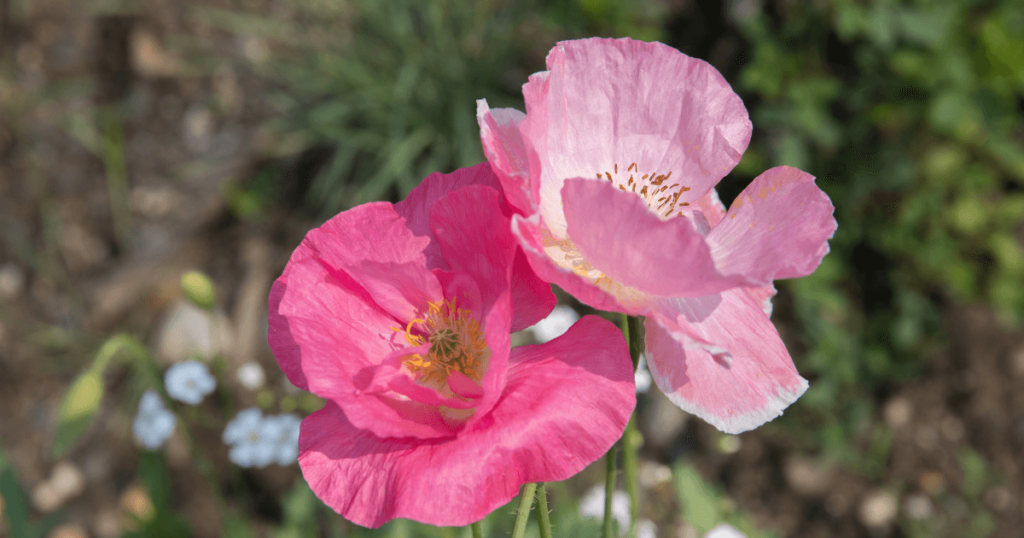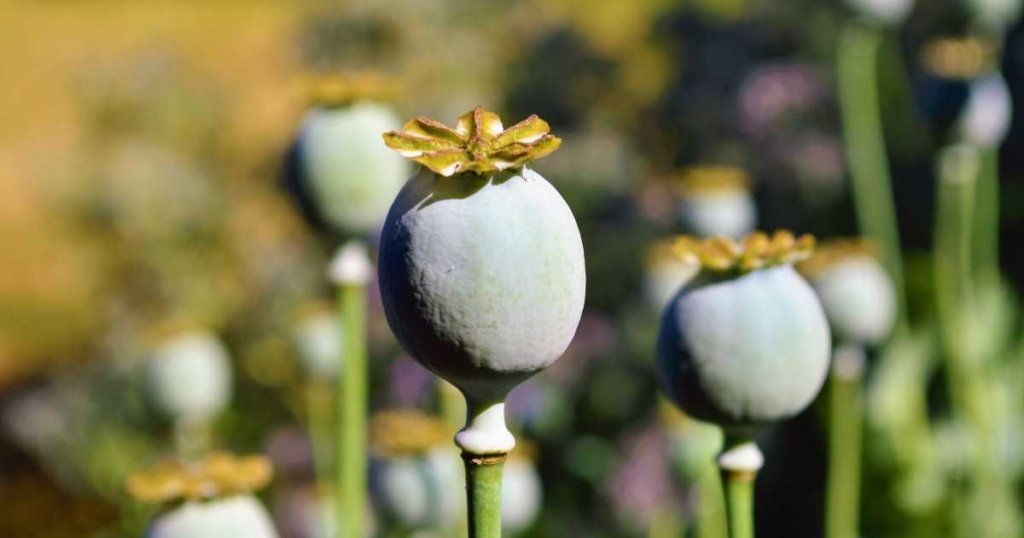
There is nothing quite as beautiful as a delicate poppy blossom. Despite what you may have been told, poppies can be easily grown in North Texas as long as you follow these key steps.
1. Shop early for poppy seeds.
Many North Texas gardeners are inspired to grow poppies when they see them blooming in the spring. Large transplants are sometimes available at nurseries then, but the best way to grow poppies in North Texas is to plan ahead and sow them by seed in the fall or start them by seed indoors in fall and early winter. This unique timing requirement means that you should shop for your poppy seeds ahead of time to get the best selection.
Online sources carry a wide selection of poppy seeds year-round. My favorite online sources for poppy seeds are:
Botanical Interests
Swallowtail Seeds
Johnny’s Seeds

2. Plant poppy seeds directly or start indoors.
North Texas gardeners can plant poppy seeds directly in the garden in mid-to-late September through early October when the weather starts to cool off. Like perennials, poppies establish their root systems through the winter in preparation for spring bloom.
If sowing direct: Mix the tiny poppy seeds in fine sand (roughly a 3-to-1 sand to seed ratio), then scatter the seed/sand mix across the planting area. Gently press the seeds into soil with your hand or the back of a shovel, taking care not to cover them. Poppy seeds need light to germinate.
If you prefer to start your seeds indoors (which is what I do): Start the seeds indoors any time between mid-August and December. Transplant seedlings into the garden once they outgrow the cell tray.
Keep in mind that Icelandic poppies like ‘Champagne Bubbles’ are a bit finicky when started indoors, so be sure to sow extra. I’ve had better luck starting Shirley Poppies indoors.
After sowing, keep the sed bed evenly moist, and your poppies will germinate in 2-4 weeks. Once the poppies are 2″ tall, thin the plants so that they are 6 inches apart.

3. Protect seedlings from freezing temperatures.
Your poppy plants will grow through the winter and then start blooming in early spring. Though poppies prefer cooler weather and will tolerate a light frost, be sure to cover your poppies with frost cloth whenever temperatures drop below 28 degrees.
4. Maintain moisture during budding and blooming.
During periods of dry weather, make sure to keep your garden beds evenly moist with supplemental
If possible, avoid overhead
5. Save poppy seed for next year.

In late spring, when seed heads turns brown and the tops pop up, snip off seed heads to save for next year. Store seeds in plastic bags or glass jars. Leave some seed heads on and the plants might re-seed themselves. Saving seed is extra insurance.
Let the seed dry and clean off debris. Store indoors in plastic bags or containers.
- Can Eating Tomatoes Help Prevent Weight Gain? New Study Says Yes - May 25, 2025
- New to Gardening? Join Our Step-by-Step Beginner Gardening Class - April 24, 2025
- Why “Intensive” Gardening is Not Good - March 9, 2025





